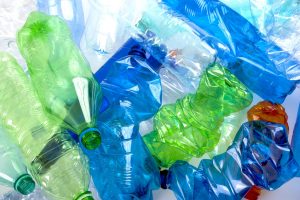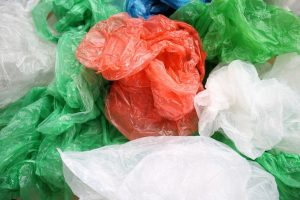 A French company developing an enzymatic depolymerization process for PET has signed a deal to bring its technology from the lab to a pilot-scale facility.
A French company developing an enzymatic depolymerization process for PET has signed a deal to bring its technology from the lab to a pilot-scale facility.

 A French company developing an enzymatic depolymerization process for PET has signed a deal to bring its technology from the lab to a pilot-scale facility.
A French company developing an enzymatic depolymerization process for PET has signed a deal to bring its technology from the lab to a pilot-scale facility.
 The PET recycling rate is increasing in South Africa, and a PVC recycling program in the U.K. gets kudos.
The PET recycling rate is increasing in South Africa, and a PVC recycling program in the U.K. gets kudos.
 Residents of a settlement in Zambia collect and sell scrap plastics in place of a formal hauling service, and ag plastics recycling efforts grow in Australia.
Residents of a settlement in Zambia collect and sell scrap plastics in place of a formal hauling service, and ag plastics recycling efforts grow in Australia.
 A major newspaper calls for the most-populous U.S. state to ban EPS packaging, and a study finds toxic flame retardants end up in children’s toys made from recycled e-plastics.
A major newspaper calls for the most-populous U.S. state to ban EPS packaging, and a study finds toxic flame retardants end up in children’s toys made from recycled e-plastics.
 One manufacturer that uses recycled plastics will acquire another, and Pennsylvania may be moving to prohibit plastic bag bans.
One manufacturer that uses recycled plastics will acquire another, and Pennsylvania may be moving to prohibit plastic bag bans.
 In the latest chapter of its ongoing expanded polystyrene saga, New York City will again ban foam food-service packaging. City officials have determined it “cannot be recycled in a manner that is economically feasible or environmentally effective.”
In the latest chapter of its ongoing expanded polystyrene saga, New York City will again ban foam food-service packaging. City officials have determined it “cannot be recycled in a manner that is economically feasible or environmentally effective.”
 For years, Florida has prohibited local bans on plastic bags and EPS food-service products – or has it? A state judge recently ruled that the prohibition no longer applies and, in response, one city has passed a plastic bag ban.
For years, Florida has prohibited local bans on plastic bags and EPS food-service products – or has it? A state judge recently ruled that the prohibition no longer applies and, in response, one city has passed a plastic bag ban.
An appeals court in New York has rejected an attempt by the New York City Department of Sanitation to restore a ban on expanded polystyrene food-service products. Continue Reading
 Connecticut’s governor proposes to double the state’s 5-cent deposit, while legislation advancing in Iowa’s legislature aims to kill the deposit program altogether.
Connecticut’s governor proposes to double the state’s 5-cent deposit, while legislation advancing in Iowa’s legislature aims to kill the deposit program altogether.
 The Golden State’s container redemption program differs from bottle bills in other states, and according to a new study, that fact might be hindering the system’s effectiveness.
The Golden State’s container redemption program differs from bottle bills in other states, and according to a new study, that fact might be hindering the system’s effectiveness.
